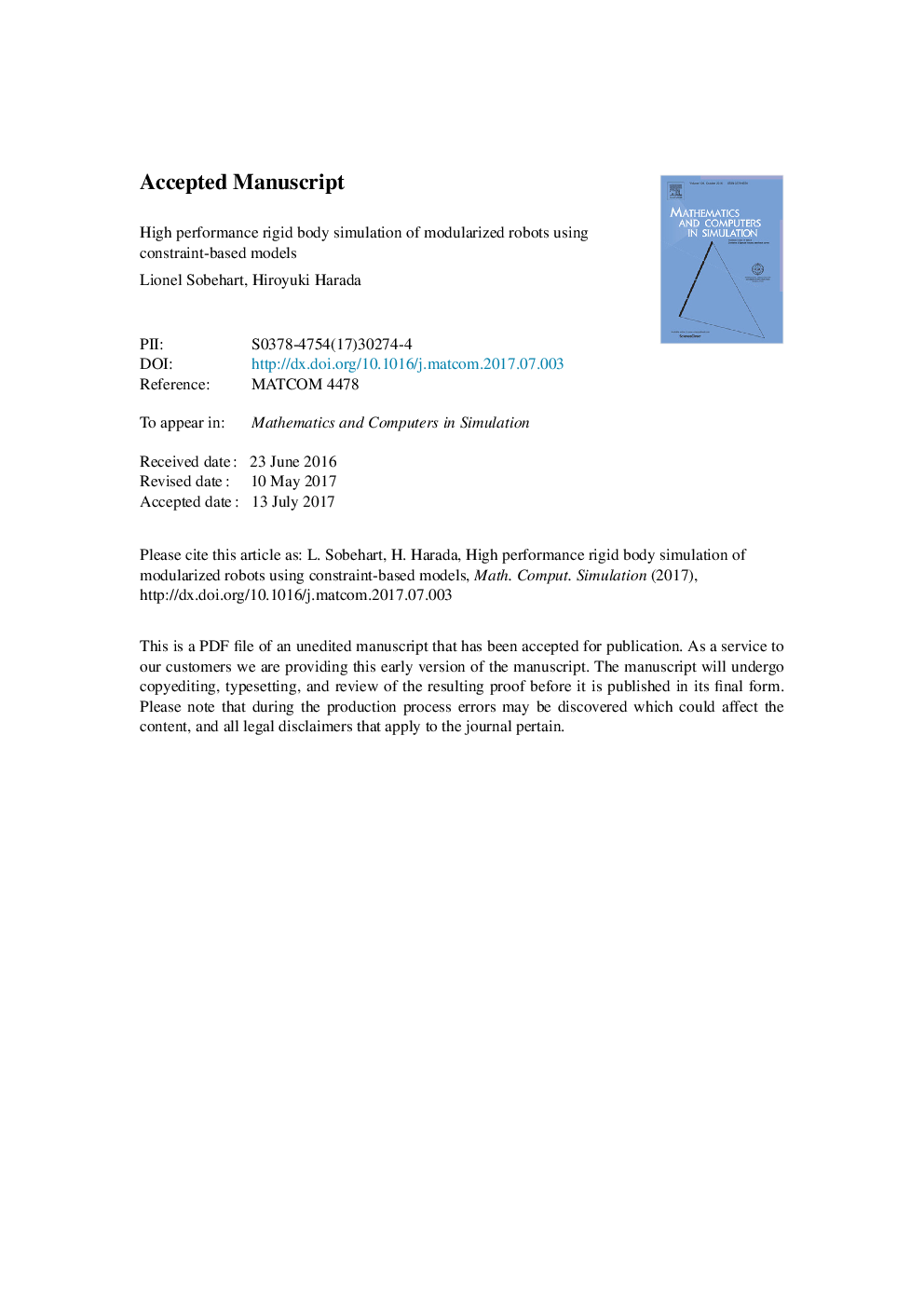| Article ID | Journal | Published Year | Pages | File Type |
|---|---|---|---|---|
| 7543338 | Mathematics and Computers in Simulation | 2018 | 23 Pages |
Abstract
Modularization using self-controlling servo-motors allows for rapid prototyping of highly articulated robots at a much lower cost than custom designs. Microcontrollers within the motor casings allow the internal motor to be controlled in a closed loop running at a much higher frequency than possible with external commands, at the cost of an inability to use directly estimated motor responses, especially when internal components are not known. Although electro-mechanical motor models have been used to simulate systems directly when the module components are known, this requires full knowledge of the system and small steps during discrete time simulation to prevent instabilities in the simulation and control. We propose a rigid body constraint based model for the simulation of internally controlled articulated robot modules that can reduce simulation instabilities at larger time-steps without requiring simulation specific non-physical damping or closed form dynamic solutions. This method uses the properties of rigid body constraints to limit system dynamics when low system inertia or high control gains would otherwise result in physically impossible performance. In practice, the simulation accuracy of this method is comparable to traditional models, but an order of magnitude faster in practice due to larger time-steps and improved range of stability.
Related Topics
Physical Sciences and Engineering
Engineering
Control and Systems Engineering
Authors
Lionel Sobehart, Hiroyuki Harada,
